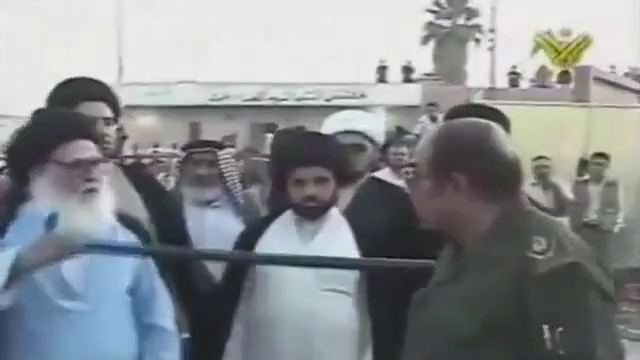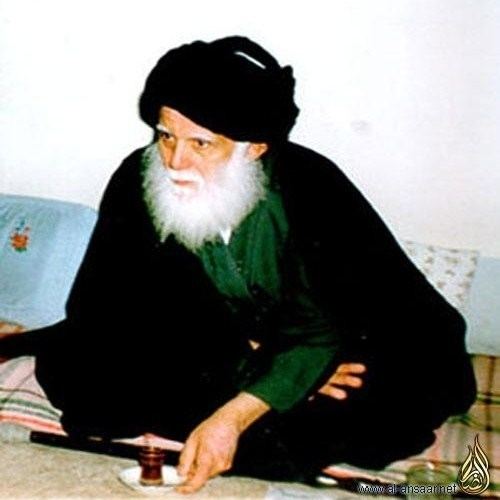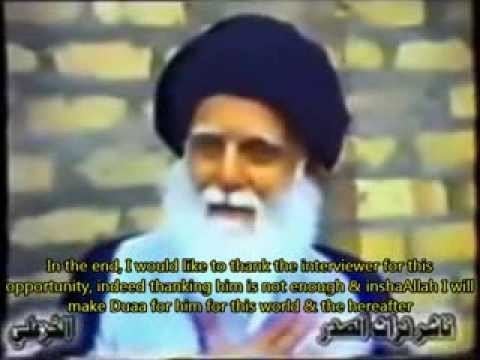Titles Marja' Name Mohammad Sadeq | Role Ayatollah Children Muqtada al-Sadr Parents Mohammad Sadeq al-Sadr | |
 | ||
Other names Arabic: محمد محمّد صادق الصدر Predecessor Grand Ayatollah Mohammad Baqir al-Sadr Assassinated February 19, 1999, Najaf, Iraq People also search for Muqtada al-Sadr, Muhammad Baqir al-Sadr, Mustafa al-Sadr, Mortada al-Sadr, Moaml al-Sadr | ||
Grand Ayatollah Mohammad Mohammad Sadeq al-Sadr (Arabic: محمد محمّد صادق الصدر; Muḥammad Muḥammad Ṣādiq aṣ-Ṣadr) (March 23, 1943 – February 19, 1999), often referred to as Muhammad Sadiq as-Sadr which is his father's name, was a prominent Iraqi Twelver Shi'a cleric of the rank of Grand Ayatollah. He called for government reform and the release of detained Shi'a leaders. The growth of his popularity, often referred to as the followers of the Vocal Hawza, also put him in competition with other Shi'a leaders, including Ayatollah Mohammed Baqir al-Hakim who was exiled in Iran.
Contents

Biography

Mohammad Mohammad Sadeq al-Sadr was born in Al-Najaf in Iraq. His father, Mohammad Sadeq al-Sadr (1906–1986), was the grandson of Ismail al-Sadr, the patriarch of the Sadr family and a first cousin of Muhammad Baqir al-Sadr and Bint al-Huda.

Following the Gulf War, Shi'ites in Southern Iraq went into open rebellion. A number of provinces overthrew the Baathist entities and rebelled against Saddam Hussein and the Baath Party. The leadership of the Shi'ite rebellion as well as the Shi'ite doctrine in Iraq was split between Ayatollah Ali Sistani and Ayatollah Muhammad Sadiq al-Sadr. Sadr, based in Baghdad, appealed to the younger, more radical Shi'ites from the more impoverished areas of Southern Iraq. The Shi'ites traveled to Baghdad from these poor areas to join Sadr and his Shi'ite leadership. The area which Sadr preached in and these poor Shi'ites occupied became known as "Revolution Township". In this ghetto, Sadr established a secret network of devoted followers and he became an increasingly prominent figure in the Iraqi political scene.

As a result of the disenfranchisement and repression of the Shi'ites in Iraq and the loyalty of the local populations, Saddam Hussein and his Baathist government could not control the Revolution Township on a neighborhood level. Their lack of control limited their ability to effect al-Sadr's power base and the devotion of his followers. Revolution Township was ironically renamed Saddam City, an acute definition of the poverty and oppression Saddam brought to the Shi'ites in the span of his reign over Iraq.

As his power grew, al-Sadr became more and more involved in politics following the Gulf War and throughout the 1990s he openly defied Saddam. He organized the poor Shi'ites of Sadr City, yet another nickname for the impoverished Shi'ite ghetto in Baghdad, against Saddam and the Baath Party. Sadr gained the support of the Shi'ites by reaching out to tribal villages and offering services to them that they would otherwise not have been afforded by Hussein's regime. Saddam began to crack down on the Shi'ite leaders in the late 1990s in an attempt to regain control of Iraq.
Sometime before his death, al-Sadr was informed of Saddam's limited patience with him. In defiance, al-Sadr wore his death shroud to his final Friday sermon to show that the Shi'ites would not be intimidated by Saddam's oppression and that Sadr would preach the truth even if it meant his own death. He was later killed leaving the mosque in the Iraqi city of Najaf along with two of his sons as they drove through the town. Their car was ambushed by men, and both his sons were killed by gunfire while he was severely injured. He died an hour later in the hospital. Shi'as in Iraq, as well as most international observers, suspect the Iraqi Baathist government of being involved in, if not directly responsible, for their murders. Anger at, among other things, the government's involvement in Sadr's death helped spark the 1999 Shia uprising in Iraq. Saddam later vowed to hunt down the perpetrators who assassinated Sadr and called for Shia-Sunni unity in Iraq.
Following the fall of Baghdad, the majority-Shi'a suburb of Revolution City (Saddam City) was unofficially but popularly renamed to Sadr City in his honor. Sadr City was the first part of Baghdad to overthrow the Baath Party in 2003.
Mohammad al-Sadr's son, Muqtada al-Sadr, is currently the leader of the Sadr-ist movement and bases his legitimacy upon his relationship to his father. He led a guerilla uprising against Coalition forces and the new Iraqi government as part of the Iraqi Insurgency between 2004 and 2008.
